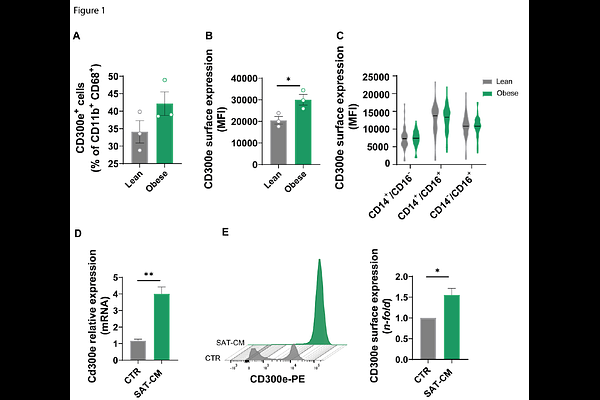CD300e Controls Macrophage Lipid Handling and Safeguards Adipose Tissue Function in Obesity

CD300e Controls Macrophage Lipid Handling and Safeguards Adipose Tissue Function in Obesity
Coletta, S.; Pizzini, S.; Vassallo, S.; Trevellin, E.; Barizza, A.; Giacometti, S.; Sales, G.; Carli, F.; Gastaldelli, A.; Vettor, R.; de Bernard, M.
AbstractIn obesity, adipose tissue macrophages (ATMs) cluster around hypertrophic adipocytes, where they actively engage in lipid uptake, lysosomal degradation, and fatty acid metabolism. Emerging evidence indicates that lysosomal dysfunction within ATMs exacerbates lipid retention, promoting the release of anti-lipolytic factors that suppress adipocyte lipolysis and perpetuate adipose dysfunction. In this study, we uncover a previously unrecognized role for the immune receptor CD300e in this regulatory network. Using a Cd300e -/- mouse model under high-fat diet conditions, we demonstrate that loss of CD300e exacerbates adipocyte hypertrophy, aggravates hepatic steatosis, and impairs glucose and insulin tolerance. Mechanistically, CD300e-deficient ATMs exhibit increased lipid accumulation, while adipocytes shift toward enhanced lipogenesis and reduced lipolysis. These findings advance our knowledge on immunometabolic crosstalk governing metabolic homeostasis within adipose tissue and identify CD300e as a critical sensor modulating lipid handling in ATMs, thus maintaining the metabolic dialogue between these cells and adipocytes. The absence of CD300e destabilizes adipose homeostasis, driving adiposopathy and systemic metabolic dysfunction. Therapeutically, targeting CD300e may represent a novel strategy to restore adipose tissue function and combat obesity-related metabolic complications.